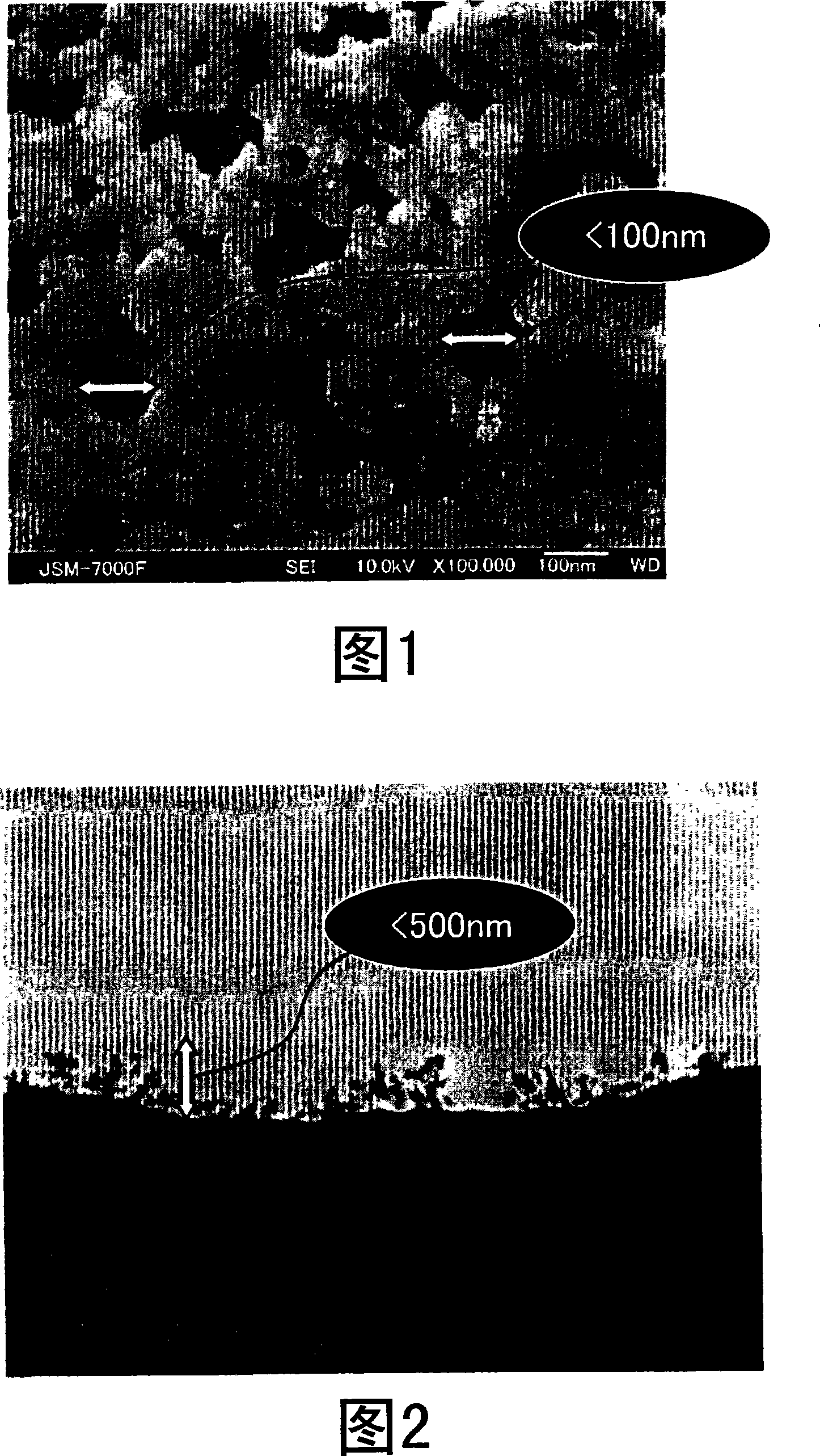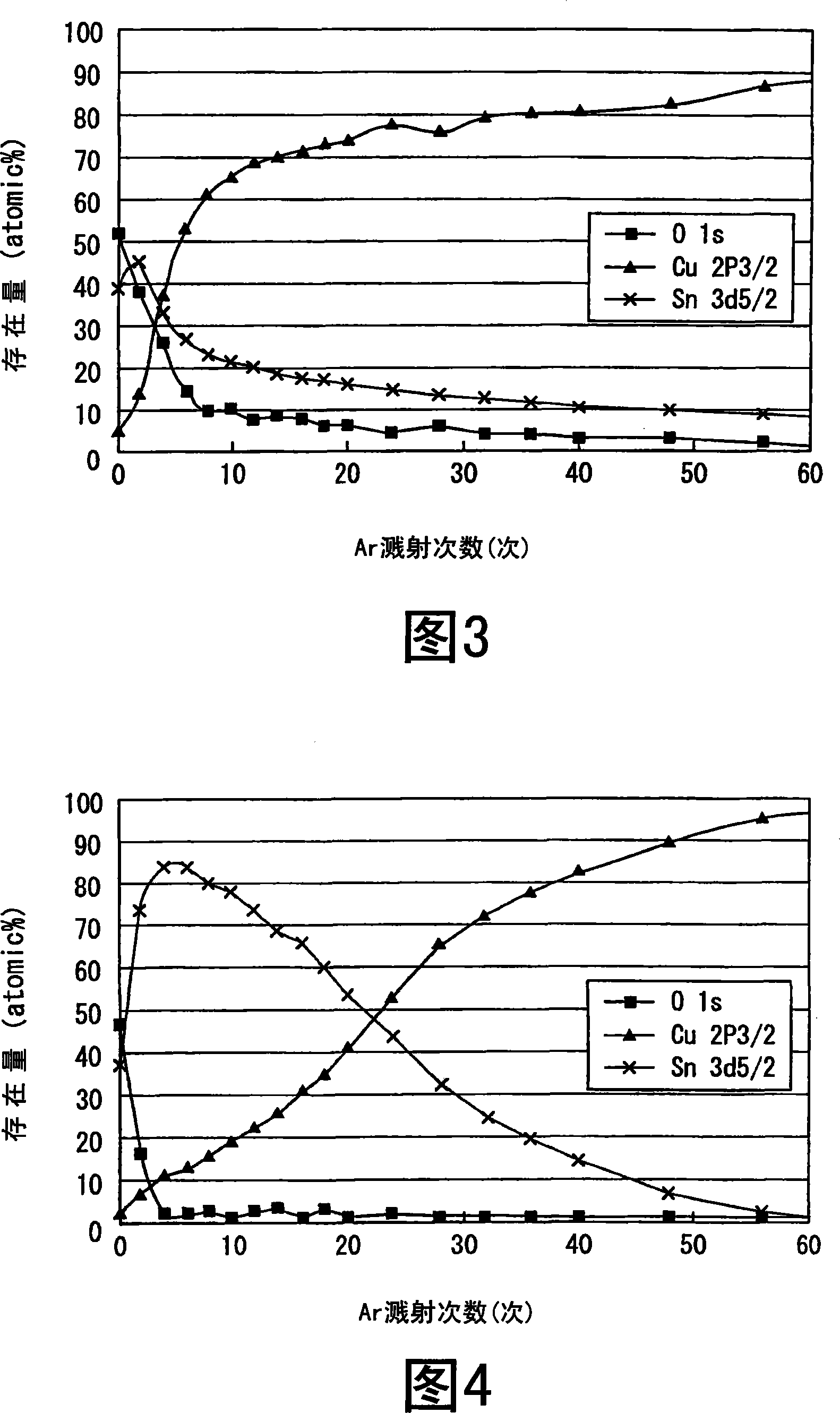Felting laminate for resin and method for manufacturing laminated body using same
A manufacturing method and adhesive layer technology, applied in the direction of epoxy resin glue, printed circuit manufacturing, chemical instruments and methods, etc., can solve the problem of insufficient resin adhesion, thinner copper wiring, and resin adhesion that cannot be achieved Sufficient levels etc.
- Summary
- Abstract
- Description
- Claims
- Application Information
AI Technical Summary
Problems solved by technology
Method used
Image
Examples
Embodiment 1
[0077] (1) Determination of surface treatment and peel strength
[0078] Etch the electrolytic copper foil with a sodium persulfate aqueous solution to 2 μm to remove the chromate-treated surface of the copper foil during manufacture, expose the clean copper surface, and then immerse it in the 22% by weight of sulfuric acid, 1.8% by weight of stannous sulfate (as Sn 2+), nickel sulfate 5% by weight (as Ni 2+ ), 15% by weight of thiourea, 2% by weight of copper sulfate, 30% by weight of diethylene glycol, and ion-exchanged water as the remainder, followed by water washing and drying.
[0079] Resin for laminated circuit boards with copper foil on one side of the obtained copper foil (resin with copper foil "ABF-SHC" manufactured by Ajinomoto Co., Ltd., glass transition temperature Tg(TMA) = 165°C) , while heating and pressurizing. The peel strength of the copper foil of the obtained laminate was measured according to JIS C 6481, and is shown in Table 1.
[0080] (2) The sha...
Embodiment 2、3
[0085] It carried out similarly to Example 1 except having changed the processing liquid as shown in following Table 1. The results are shown in Table 1.
Embodiment 4
[0093] At room temperature, spray 5% by weight of copper foil on both sides of a glass cloth epoxy resin impregnated copper-clad laminate (FR4 grade, glass transition temperature Tg(TMA) = 125°C) with a thickness of 18 μm copper foil on both sides. Hydrochloric acid for 10 seconds to wash, then wash with water and dry.
[0094] Next, it was immersed in the aqueous solution of Example 1 at 30° C. for 30 seconds, washed with water, and dried. While stirring the 1 wt% aqueous acetic acid solution, a small amount of 1 wt% 3-glycidoxypropyltrimethoxysilane was added, and the stirring was continued for 1 hour to obtain a colorless transparent liquid. The copper-clad laminate treated as above was dipped in the aqueous solution, shaken for 30 seconds, then pulled up slowly to fully remove the aqueous solution. After that, it was put in an oven at 100° C. without washing with water, and dried for 30 minutes.
[0095] Next, in order to evaluate the adhesiveness between the obtained la...
PUM
| Property | Measurement | Unit |
|---|---|---|
| diameter | aaaaa | aaaaa |
| thickness | aaaaa | aaaaa |
| glass transition temperature | aaaaa | aaaaa |
Abstract
Description
Claims
Application Information
 Login to View More
Login to View More - R&D
- Intellectual Property
- Life Sciences
- Materials
- Tech Scout
- Unparalleled Data Quality
- Higher Quality Content
- 60% Fewer Hallucinations
Browse by: Latest US Patents, China's latest patents, Technical Efficacy Thesaurus, Application Domain, Technology Topic, Popular Technical Reports.
© 2025 PatSnap. All rights reserved.Legal|Privacy policy|Modern Slavery Act Transparency Statement|Sitemap|About US| Contact US: help@patsnap.com


